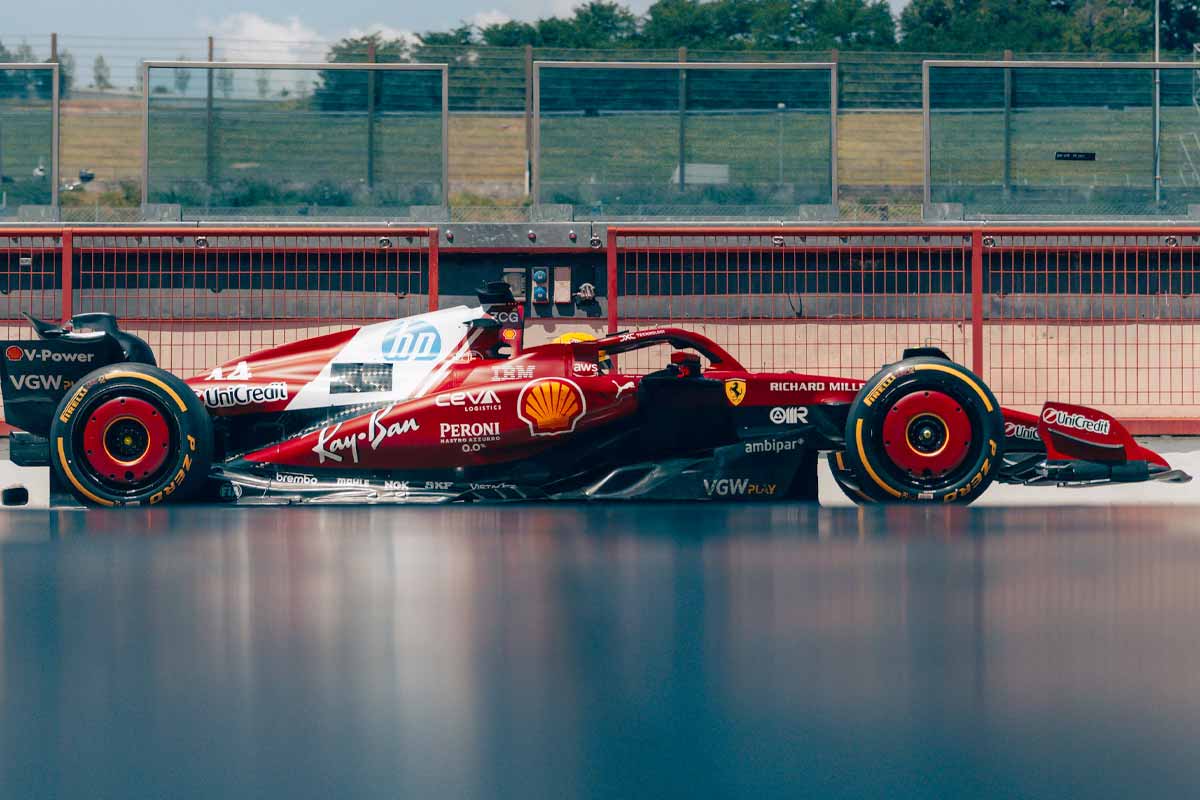
This may be Ferrari's last-ditch attempt to salvage its 2025 season of F1. After months of criticism, disappointment and hard work, the Scuderia has just tested a brand-new rear suspension system on the SF-25 at Mugello, which should finally reveal the "potential" of this single-seater, which has been difficult to exploit since the start of the championship.
A weakness identified as early as March
Since the first races of the season, Ferrari knew. The SF-25 suffered from a structural double whammy: an unstable flat bottom and a rear suspension incapable of maintaining a consistent dynamic balance. A fatal cocktail in the age of ground effect F1, where the slightest variation in height can ruin an F1 car's aerodynamic performance. Charles Leclerc and Lewis Hamilton often spoke of "strange" sensations at the wheel, particularly in fast corners. A situation that became critical after Australia and China.
Under the direction of Loïc Serra, the technical department has begun an in-depth operation: a new flat bottom was introduced at the Austrian Grand PrixThis has had some effect on overall stability, but still not enough. The other key component, the revised rear suspension, now comes into play.
Crucial test at Mugello
On July 17, Ferrari took advantage of its second "filming day" of the season at the Mugello circuit to test this new component. A discreet but extremely strategic event, less than two weeks from the Belgian Grand Prix, the scene of the next Sprint race and therefore of a reduced free practice format.
On the program: Charles Leclerc took the wheel in the morning for a series of short stints (2 to 3 laps each), focusing on feel and dynamic analysis. In the afternoon, Lewis Hamilton completed a series of longer runs (6 to 7 laps), designed to assess the repeatability of the car's behavior with the new kinematics. The aim is to validate this optimized version under semi-controlled conditions before Spa.
Concrete changes
Contrary to what some had imagined, this is not a complete redesign, but a surgical modification: the geometry of the upper triangle has been revised, with a lowered, forward anchoring point. This new arrangement modifies the kinematics of the pull-rod suspension and, above all, reduces the car's tendency to sink to the rear under acceleration.
Why is this important? Because this reduction allows the SF-25 to better manage its ride heights, widen its aerodynamic window and stabilize the flat bottom, the heart of the problem for months. On paper, it could also limit wear and tear on the flat bottom, which has been a major problem up to now.
The last cartridge before 2026?
The official introduction of this suspension is scheduled for Spa-Francorchamps, in demanding and unpredictable conditions. The Scuderia will have just one free practice session (FP1) to validate its set-up before the Sprint Parc Fermé. But internally, we're hoping that this change will finally unlock the SF-25's true level of performance.
What's at stake? To catch up with McLaren, now firmly entrenched at the front, or at least overtake Mercedes in the championship. After Spa, it may be too late: all resources will then be devoted to the development of the 2026 single-seater, designed for the new regulations.
From Monaco to Mugello with @Charles_leclerc 🏡🇮🇹 pic.twitter.com/ycCYPsG8Sj
- Scuderia Ferrari HP (@ScuderiaFerrari) July 17, 2025